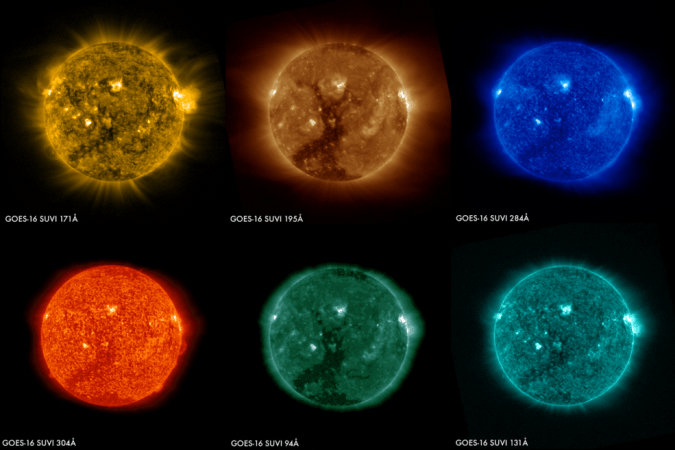
The GOES-16 (Geostationary Operational Environmental) satellite has captured photos that reveal a hole in the Sun's upper atmosphere -- its corona.
The satellite, GOES-R, is operated by the US National Oceanic and Atmospheric Administration (NOAA) for weather forecasting, severe storm tracking, space weather monitoring and meteorological research. It orbits about 35,900 km (22,300 miles) above the Earth's surface.
The solar magnetic cycle, or solar cycle, is nearly an 11-year cycle that includes changes taking place in the Sun's solar radiation, ejections and appearance.
The Sun's coronal mass ejections send charged particles into space that sometimes strike the Earth, these collisions are currently low, Space.com stated.
"Coronal holes are areas where Sun's corona appears darker because the plasma has high-speed streams open to interplanetary space, resulting in a cooler and lower-density area as compared to its surroundings," NASA said in a statement.
The new photos were captured by the satellite's Solar Ultraviolet Imager (SUVI), a telescope devised to analyse the entire solar disk for 24 hours and examine severe UV wavelength range of Sun.
The solar activity is so severe that they cause satellite disruptions and even power outages. So, NASA and other organisations are closely examining these activities to predict the next impact on Earth.
"Data from SUVI will provide an estimation of coronal plasma temperatures and emission measurements, which are important to space weather forecasting," NASA said. "The corona is best seen in X-ray or extreme ultraviolet wavelengths because it is so hot," it added.
As the corona emits light in multiple wavelengths, an instrument that can examine these wavelengths is used to cover the occurrence of solar activity.
The Sun's upper atmosphere comprises hot plasma or ionised gas, which impacts its magnetic field. These impacts lead to the formation of solar loops, which are extremely hot -- around millions of degrees. It also results in creating dark regions known as filaments, which tend to shift when solar activity is at its peak.
"[Coronal holes] occur where Sun's magnetic field allows plasma to stream away from Sun at high speed," NASA explained.
"The effects linked to coronal holes are generally milder than those of coronal mass ejections, but when the outflow of solar particles is intense — [they] can pose risks to satellites in Earth orbit," NASA added.
















